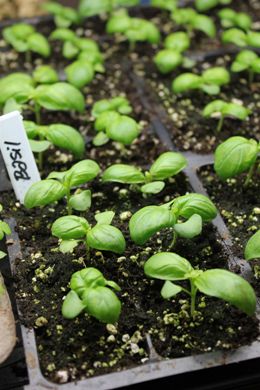
Growing plants from seed is fun and easy but even experienced sometimes run into problems. If problems arise, they’re usually pretty easy to address. Here’s how to recognize and resolve the most common trouble areas when starting seeds indoors.
Poor Germination
Sometimes seeds just never come up. This can happen for a couple different reasons.
If the seeds were old they may no longer be alive. For best results, purchase new seeds each year. Though some types of seeds are viable for 3 or 4 years (lettuce, peppers and tomatoes), others are only good for 1 year (onions and parsnips).
If the soil was too cold and wet, the seeds may have rotted. If the soil got too dry, the sprouts may have dried up. Using a quality seed starting mix (not garden soil or potting soil) will help to maintain the proper moisture level.
The seeds of many annual flowers, including impatiens, flowering tobacco, petunias and snapdragons, won’t germinate unless they are exposed to light. Seed packets usually specify whether to cover the seeds or not. After planting, use plastic wrap or a clear plastic cover to help the soil retain warmth and moisture, but be sure to remove these covers as soon as there’s any sign of growth.
Spindly Seedlings
Seedlings get tall and leggy when they are not receiving enough light. If you don’t have a greenhouse, use a fluorescent light fixture and make sure the seedlings get 12 to 14 hours of bright light each day. The lights should be positioned within 4” to 5” of the foliage. Heat can also stimulate leggy growth. Seedlings grow best when the soil is warm and the air temperature is relatively cool.
Moldy Soil Surface
Mold usually indicates that the growing medium is too wet. Though the mold probably won’t harm your plants, there are a couple things you should do to minimize its growth and improve the growing conditions for your seedlings.
Start by increasing the air circulation around your plants by opening a window or running a small fan on the lowest setting. Stop watering for a few days. Let the soil get quite dry, but don’t allow the seedlings to wilt. From then on, water deeply just once or twice a week rather than a little bit every day. If the mold growth is thick or seems to get worse, you can scrape some of it off the soil surface or transplant the seedlings into fresh soil.
Discolored Foliage
When foliage displays a purplish tinge, it usually means the plants are not receiving enough phosphorus. Cold soil makes it more difficult for plants to absorb phosphorus. Once seedlings have two sets of leaves, they should be fertilized once a week with a liquid fertilizer that contains the three major plant nutrients: nitrogen, phosphorus and potassium.
Toppled Seedlings
When the stems of young seedlings suddenly bend and topple over, they have succumbed to “damping off”. This is a disease that’s caused by a common, soil-borne fungus. To avoid it, always use fresh, good quality, sterile seed starting mix. After you have sown the seeds, allow the soil to dry out between watering. Also make sure there’s good air circulation around the plants.
Once the fungus is active, it’s difficult to get rid of it. Remove any diseased plants and stop watering for a few days. Run a fan on low so air is constantly moving across the surface of the soil. If the seedlings are large enough to handle, you can transplant them into a container of fresh soil. Try to remove as much of the old soil as possible from the roots.
If you would like to try a new way of starting plants you should try taking cuttings read this article. Taking cuttings is easy to do and has some advantages of starting seeds.
Information for this article was provided by Homeclick.com.




Comment here